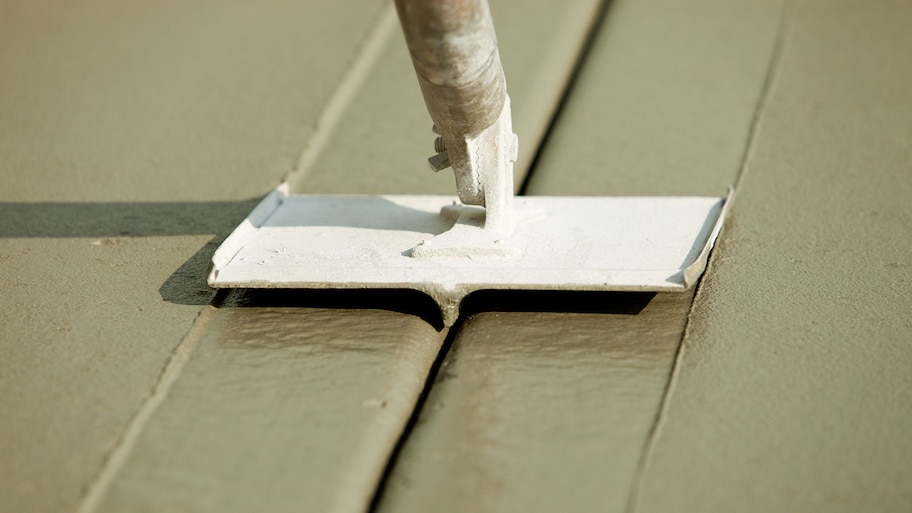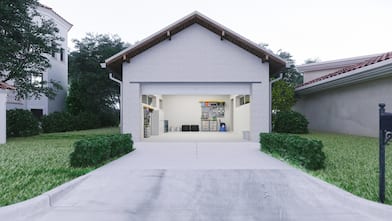Let’s crack the surface on this question
There’s nothing like the smooth, flawless look of freshly-poured concrete. So, of course, it’s frustrating to spot any hairline cracks—especially if you just paid for a new driveway, concrete slab, walkway, or garage floor. But you typically don't need to worry if you see fine lines, spider-web lines, or shattered-glass lines on your concrete’s surface. Here’s why you have cracks in your new concrete and what you can do about it.
What Causes Cracks in Concrete?
It’s natural to worry about cracks in freshly poured concrete. The truth is that some cracks are inevitable due to the structure of the surface. Let’s dive into the reason your fresh concrete may crack.
‘Plastic Shrinkage’ from Water Loss
Before concrete dries, it’s referred to as “plastic,�? and this is a particularly temperamental stage. Both hairline cracks and shrinkage cracks occur because of rapid moisture loss, also known as “plastic shrinkage,�? before it dries.
Too Much Water Added to the Mix
Plastic shrinkage can occur for a few reasons, but excess water in the concrete mix can be a big factor. Adding more water can help make the concrete easier to work with, but once that water dries, it can lead to cracking.
Concrete Dried Too Quickly
Keep an eye on your concrete slab as it cures. Rapid drying can often cause these cracks, so taking precautions can help prevent them. More on those in the next point.
Temperature, Humidity, and Wind
Make sure you’re working with ideal weather conditions and taking proper precautions like spraying your concrete with water in hot and dry weather and covering it in cool weather and high wind. A reputable local concrete driveway pro will know the best way to keep a concrete slab in good condition for optimal curing.
Environmental/Landscaping Factors
In older driveways, soil pressure is a big cause of cracks in concrete foundation blocks. Some other causes of long-term driveway cracks include everything from nearby trees to heavy vehicles. If your concrete is a bit older, a concrete repair pro may be able to help you implement a fix for cracks.
Most Common Types of Cracks
Identifying the types of cracks in your concrete can help you nail down the cause and take steps to prevent further cracking in the future. Since identifying cracks is tough for a layperson, you should also have a pro check them out, but this guide can help you understand what types of cracks you may be seeing.
Plastic shrinkage cracks: If you notice cracks in your concrete right away, you’re probably dealing with plastic shrinkage cracks. These types of cracks result from quick moisture loss during installation.
Settlement cracks: These types of cracks result from issues with the ground below a slab of concrete being compromised in some way. They tend to be wider at the top and more narrow at the bottom.
Overloading cracks: If you’re prone to parking your monster truck on your concrete driveway, you might be dealing with overloading cracks, which occur with too much pressure on the concrete. You may also see these types of cracks following a rainstorm when the soil underneath is softer.
Structural cracks: You’ll often find these cracks in concrete walls, and they usually appear to be relatively horizontal and wide. These types of cracks can be very damaging to your home, so you’ll want to call a pro ASAP if you suspect them.
Will Cracks in Fresh Pavement Stop?
Yes, in about a month, hairline cracks should subside. While shrinkage cracks can show up on the surface within hours of having concrete poured, it takes a full monthfor new concrete to fully settle.
Don't be surprised if cracks that seemed visible at first are nearly impossible to see after a month of settling. You should be able to decide if you can live with the cracks by then. Any crack that's one-eighth of an inch or smaller is considered standard.
Signs That Fresh Concrete Was Poured Improperly
If you see cracking or curling, it's possible that your concrete dried faster than it should have during pouring. It's usually the case when you see small surface cracks.
If you notice uneven cracks that are larger than 1 inch, it's often a sign of a bigger problem requiring you to invest in the cost to repair your sidewalk or driveway—or even replace it. A good test is if you can fit a quarter in the crack.
Any crack that is 1/8 of an inch or less is typically considered a harmless hairline crack. Tell your contractor if you think something went wrong during pouring.
In fact, you can consider the following options if you have suspicions about the work:
Bring the contractor back to go over your concerns
Have a supplier representative take a look
Have another contractor inspect the job to give a third-party perspective
Some Concrete Cracks Are Planned

When cracks can’t be prevented, concrete contractors often use control joints to, well, control where the cracks will end up. Think of cracks in the sidewalk.
Here's how it works:
The contractor spaces the control joints in the concrete
The joints relieve pressure
Cracks form in the right spots
Cracking is undetectable
When to Worry About Cracks in Concrete
Keep an eye on cracks to make sure they’re not a sign of a larger problem. Here are some potential problems if a crack gets wide enough for water to seep into the slab:
Water can rust your rebar
Rusting/cracking weakens the foundation
Frozen water in cracks expands cracks
How to Prevent and Repair Cracks in Concrete
Talk to your contractor about their curing process. Properly cured concrete is much less likely to crack. Your contractor may ask you to spray down the concrete with water up to 10 times a day for the first week. This is known as moist curing and can greatly improve the strength of concrete.
If you don’t have time to wet the concrete multiple times a day, moist curing will not be an option. Instead, cover the concrete with an insulating plastic sheet or even straw to trap moisture and help the concrete cure at an even rate. Take off the insulating layer and wet the concrete once a day to ensure it stays moist.
If you live in a very cold climate, your contractor may opt to cover the curing concrete with blankets. Yep, cozy cracks.Curing concrete can dry out and crack even faster in cold weather than in warm weather.
Alongside these traditional curing methods, concrete additives and curing compounds can help concrete cure faster and withstand cold weather. After the concrete has fully cured, you can also consider using a concrete sealing compound to improve the appearance and reduce cracking.
Don't forget to ask your contractor about how theyprevent concrete cracks when pouring new concrete. Of course, you're more likely to get satisfactory results if you choose a concrete company with great reviews from past customers.




